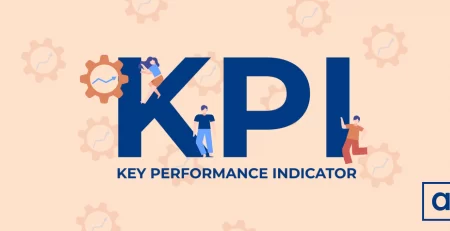Hyperledger and Smart Contracts
Introduction
Blockchain technology, with its decentralized and transparent nature, has redefined the way businesses operate. At the forefront of enterprise-grade blockchain solutions stands Hyperledger, an open-source project hosted by the Linux Foundation. Comprising various frameworks like Fabric, Sawtooth, Indy, and Besu, Hyperledger offers a modular and flexible ecosystem. Paired with the transformative capabilities of smart contracts, Hyperledger becomes a powerful catalyst for innovation, streamlining processes, and ensuring trust in a myriad of industries.
Understanding Hyperledger
Hyperledger is not a single blockchain platform but rather an umbrella project that hosts a diverse set of frameworks and tools. Each of these frameworks caters to specific use cases and industries, promoting interoperability and modularization. Some of the most notable Hyperledger frameworks include Fabric, Sawtooth, Indy, and Besu.
-
Hyperledger Fabric
Fabric is arguably the most widely adopted framework within the Hyperledger umbrella. It provides a modular and extensible architecture, enabling enterprises to tailor their blockchain solutions to their specific needs. Fabric is known for its permissioned network, allowing only authorized participants to access the blockchain. This feature makes it particularly appealing for business and enterprise applications.
-
Hyperledger Sawtooth
Sawtooth is another Hyperledger framework that distinguishes itself with a unique consensus algorithm known as “Proof of Elapsed Time” (PoET). This consensus algorithm is designed to ensure fairness and security in a permissioned blockchain network. Sawtooth also supports the creation of both permissioned and permissionless blockchain networks, making it versatile for different use cases.
-
Hyperledger Indy
Hyperledger Indy focuses on identity management, aiming to provide a decentralized identity ecosystem. This framework is particularly relevant in industries where secure and verifiable identity is crucial, such as finance, healthcare, and government services.
-
Hyperledger Besu
Besu is designed to meet the specific needs of the enterprise Ethereum community. It is a Java-based client that supports the Ethereum protocol, making it compatible with the Ethereum mainnet. Besu’s enterprise-friendly features, such as permissioning and privacy, make it a suitable choice for businesses seeking to leverage the Ethereum network securely.
Smart Contracts: A Brief Overview
Smart contracts have emerged as a cornerstone of blockchain technology, offering a decentralized and automated approach to executing and enforcing contractual agreements. Pioneered by Ethereum, these self-executing contracts have found applications across various industries, streamlining processes, reducing costs, and enhancing transparency. In this overview, we delve into the fundamental concepts, features, and applications of smart contracts, exploring how they are reshaping the landscape of digital transactions.
Hyperledger and Smart Contracts: A Powerful Combination
Hyperledger, with its focus on enterprise-grade solutions, provides an ideal environment for the implementation of smart contracts. Let’s explore how Hyperledger frameworks facilitate the integration and deployment of smart contracts in various business scenarios.
-
Hyperledger Fabric and Smart Contracts
Fabric supports smart contracts written in general-purpose programming languages like Go and JavaScript, making it accessible to a broader developer community. Smart contracts in Fabric, known as “chaincode,” are executed within a containerized environment, ensuring isolation and security. The permissioned nature of Hyperledger Fabric’s network enhances privacy and confidentiality, crucial aspects for many enterprise applications.
Fabric’s modular architecture allows for the deployment of multiple smart contracts simultaneously, promoting code separation and maintainability. This flexibility is valuable in scenarios where different business processes require distinct smart contracts.
-
Hyperledger Sawtooth and Smart Contracts
Sawtooth extends support for smart contracts through its Transaction Processor, enabling developers to implement business logic in various languages, such as Python and JavaScript. The smart contracts in Sawtooth are referred to as “Transaction Families,” and they define the rules for creating and validating transactions.
Sawtooth’s unique PoET consensus algorithm enhances the security and fairness of smart contract execution. The modular design of Sawtooth also allows for easy upgrades and modifications to the smart contract logic without affecting the entire network.
-
Hyperledger Indy and Smart Contracts
While Hyperledger Indy is primarily focused on identity management, smart contracts play a crucial role in establishing trust and managing interactions within decentralized identity ecosystems. Smart contracts in Indy enable secure and verifiable transactions related to identity attributes, enhancing the overall reliability of the identity management process.
The integration of smart contracts in Hyperledger Indy is a testament to the versatility of this framework, showcasing its applicability beyond traditional financial use cases.
-
Hyperledger Besu and Smart Contracts
Hyperledger Besu brings Ethereum compatibility to the Hyperledger ecosystem, allowing developers to leverage existing Ethereum smart contracts on a permissioned network. This compatibility is particularly beneficial for businesses that want to transition from public to private blockchain environments without sacrificing the functionality of their smart contracts.
Besu’s support for Ethereum’s Solidity language ensures that developers can seamlessly migrate and deploy smart contracts, promoting interoperability across different blockchain networks.
Use Cases and Benefits
The combination of Hyperledger frameworks and smart contracts opens the door to a wide array of use cases across various industries. Here are some notable examples:
-
Supply Chain Management
Hyperledger Fabric, with its permissioned network and support for smart contracts, is well-suited for supply chain management. Smart contracts can automate and enforce agreements between different parties involved in the supply chain, ensuring transparency and traceability of goods from the source to the end consumer.
For instance, a smart contract on a Fabric network can automatically trigger payments when predefined conditions, such as the successful delivery of goods, are met. This reduces the need for manual intervention, minimizes disputes, and accelerates the entire supply chain process.
-
Financial Services
Hyperledger frameworks are increasingly being adopted in the financial services sector to streamline processes and enhance security. Smart contracts play a pivotal role in automating financial transactions and ensuring compliance with regulatory requirements.
In scenarios where multiple parties are involved in a financial transaction, Hyperledger’s permissioned network and Fabric’s support for complex smart contracts provide a secure and efficient solution. This is particularly valuable for applications like trade finance, where smart contracts can automate the execution of payment terms based on predefined criteria.
-
Healthcare
The healthcare industry faces challenges related to data interoperability, security, and patient privacy. Hyperledger Indy, with its focus on decentralized identity, combined with smart contracts, can address some of these challenges.
Smart contracts in a Hyperledger Indy network can facilitate secure and auditable sharing of patient data between different healthcare providers. Patients can control access to their health records through self-executing smart contracts, ensuring privacy and data integrity.
-
Legal and Governance
Smart contracts have the potential to revolutionize legal agreements and governance processes. Hyperledger frameworks, such as Fabric and Sawtooth, provide a robust foundation for implementing smart contracts in these domains.
For example, a legal contract deployed on a Fabric network can automatically execute clauses based on predefined conditions. This not only reduces the risk of contractual disputes but also accelerates the overall contract lifecycle. In governance, smart contracts can be used to automate decision-making processes, enhancing transparency and accountability.
Challenges and Considerations
While the integration of Hyperledger and smart contracts offers immense potential, there are challenges and considerations that organizations must address:
-
Development Complexity
Smart contract development requires a solid understanding of the underlying blockchain framework and the programming languages supported by it. Organizations may face a learning curve when adopting Hyperledger, especially if they are new to blockchain technology.
To mitigate this challenge, there is a growing ecosystem of tools, documentation, and community support around the Hyperledger projects, making it easier for developers to navigate and implement smart contracts within their specific use cases.
-
Interoperability
Interoperability is a critical consideration, especially for businesses that operate in multi-platform environments. While Hyperledger provides a modular and interoperable ecosystem, ensuring seamless integration with existing systems and other blockchain networks may require additional effort.
Efforts are underway within the Hyperledger community to enhance interoperability between different frameworks and with external blockchain networks. Solutions such as cross-chain communication protocols and standardized interfaces aim to simplify the integration process and promote collaboration between diverse blockchain platforms.
Scalability
Scalability remains a challenge for many blockchain networks, including those built on Hyperledger frameworks. As organizations scale up their operations and the number of transactions increases, ensuring consistent performance becomes crucial.
Hyperledger Fabric, for instance, addresses scalability concerns through its modular architecture, enabling organizations to optimize their networks based on specific requirements. Additionally, ongoing research and development within the Hyperledger community focus on improving the scalability of various frameworks to meet the growing demands of enterprise applications.
-
Regulatory Compliance
Industries such as finance, healthcare, and legal services must adhere to stringent regulatory requirements. Implementing smart contracts on a blockchain introduces a new layer of complexity concerning compliance with existing regulations.
Hyperledger’s permissioned networks provide a foundation for meeting regulatory standards by controlling access and ensuring that only authorized participants engage with the blockchain. However, organizations must remain vigilant and work closely with legal experts to ensure that their smart contracts comply with relevant regulations and standards.
Future Trends and Developments
As Hyperledger and smart contracts continue to evolve, several trends and developments are shaping the future landscape of blockchain technology in enterprise settings:
-
Integration with Emerging Technologies
The integration of blockchain with emerging technologies, such as artificial intelligence (AI) and the Internet of Things (IoT), is on the horizon. Hyperledger’s modular architecture positions it well to seamlessly integrate with these technologies, creating comprehensive solutions that go beyond traditional blockchain applications
For instance, smart contracts in Hyperledger could be employed to automate and enforce agreements in AI-driven business processes or to facilitate transparent and secure communication between IoT devices.
-
Cross-Industry Collaboration
Hyperledger’s open-source nature encourages cross-industry collaboration, allowing organizations from different sectors to share insights and contribute to the development of blockchain solutions. This collaborative approach fosters the creation of standardized frameworks and best practices, reducing barriers to entry for businesses exploring blockchain adoption.
-
Enhanced Privacy and Confidentiality
As privacy concerns become increasingly significant in the digital age, Hyperledger frameworks are expected to prioritize the development of advanced privacy and confidentiality features. This includes improvements to cryptographic techniques and zero-knowledge proofs, ensuring that sensitive information can be securely transacted on the blockchain without compromising privacy.
-
Continued Research on Consensus Mechanisms
Consensus mechanisms are crucial components of any blockchain network, influencing its security, scalability, and decentralization. Ongoing research within the Hyperledger community and the broader blockchain space is focused on developing novel consensus mechanisms that address the limitations of existing approaches.
Conclusion
The synergy between Hyperledger and smart contracts represents a milestone in the evolution of blockchain technology for enterprises. By combining the modular and interoperable nature of Hyperledger frameworks with the self-executing capabilities of smart contracts, organizations can unlock new possibilities for efficiency, transparency, and security.
While challenges exist, the ongoing advancements within the Hyperledger community and the broader blockchain ecosystem demonstrate a commitment to addressing these issues. As businesses increasingly recognize the transformative potential of Hyperledger and smart contracts, the adoption of blockchain technology is poised to accelerate across diverse industries, ushering in a new era of decentralized and trustless collaboration.













Leave a Reply